When the crystal ball dropped in Times Square on New Year’s Eve, it brought an end to 2018, but that doesn’t necessarily mean there is nothing left that you can do to save money and lower any taxes you may owe on your 2018 income.
While the first notes of Auld Lang Syne meant the end to any opportunities to use charitable donations or losses on investments as a way to lower your 2018 taxes, you still have until Tax Day, April 15, 2019, to lower what you owe by contributing to a traditional Individual Retirement Account (IRA). For the 2018 calendar year, the Internal Revenue Service (IRS) allows individuals to contribute a maximum of $5,500 to an IRA, with that amount rising to $6,500 for those age 50 or over. These amounts may be reduced for taxpayers who are covered by retirement plans at work, or those at higher income levels.
In the case of self-employed individuals who have Simplified Employee Pension IRAs (SEP-IRAs), contributions for the 2018 year can be as much as $55,000, so long as that amount is not greater than 25% of the individual’s total 2018 compensation.
Contributions to Roth IRAs are also able to be made until April 15, 2019 for 2018, but since taxes on Roth contributions are paid up front to provide individuals the benefit of tax-free withdrawals at retirement, contributions are not tax deductible.
When it comes to planning for the 2019 tax year, the IRS has raised the maximum IRA contribution limit to $6,000, although the catch-up contribution for taxpayers age 50 and older remains the same at $1,000.
Another good way of setting yourself up for a lower tax bill in 2019 is by contributing to a dependent care flexible spending arrangement (FSA), or a health savings account (HSA) if you have a high – deductible healthcare insurance plan.
In the case of a dependent care FSA, parents who have enrolled prior to the tax year have the ability to set aside up to $5,000 in 2019 in pre-tax money that can be used to cover the cost of childcare services from after-care to summer camps.
If your employer’s benefit enrollment period has not yet closed for 2019, and if you are someone who is interested in a high-deductible healthcare insurance plan, the IRS has raised the contribution limits for 2019 to $3,500 for single individuals and $7,000 for family plans, with an additional $1,000 catch-up contribution allowed for individuals who are age 55 or older. Just as with dependent-care FSA contributions, money contributed to HSAs is pre-tax income that will ultimately lower your overall year-end taxable income.
Reminder, you have until April 15th, 2019. Keep watch for scammers and check with your tax advisor to see if making a 2018 contribution is right for you.
About This Author

Alpine Bank


